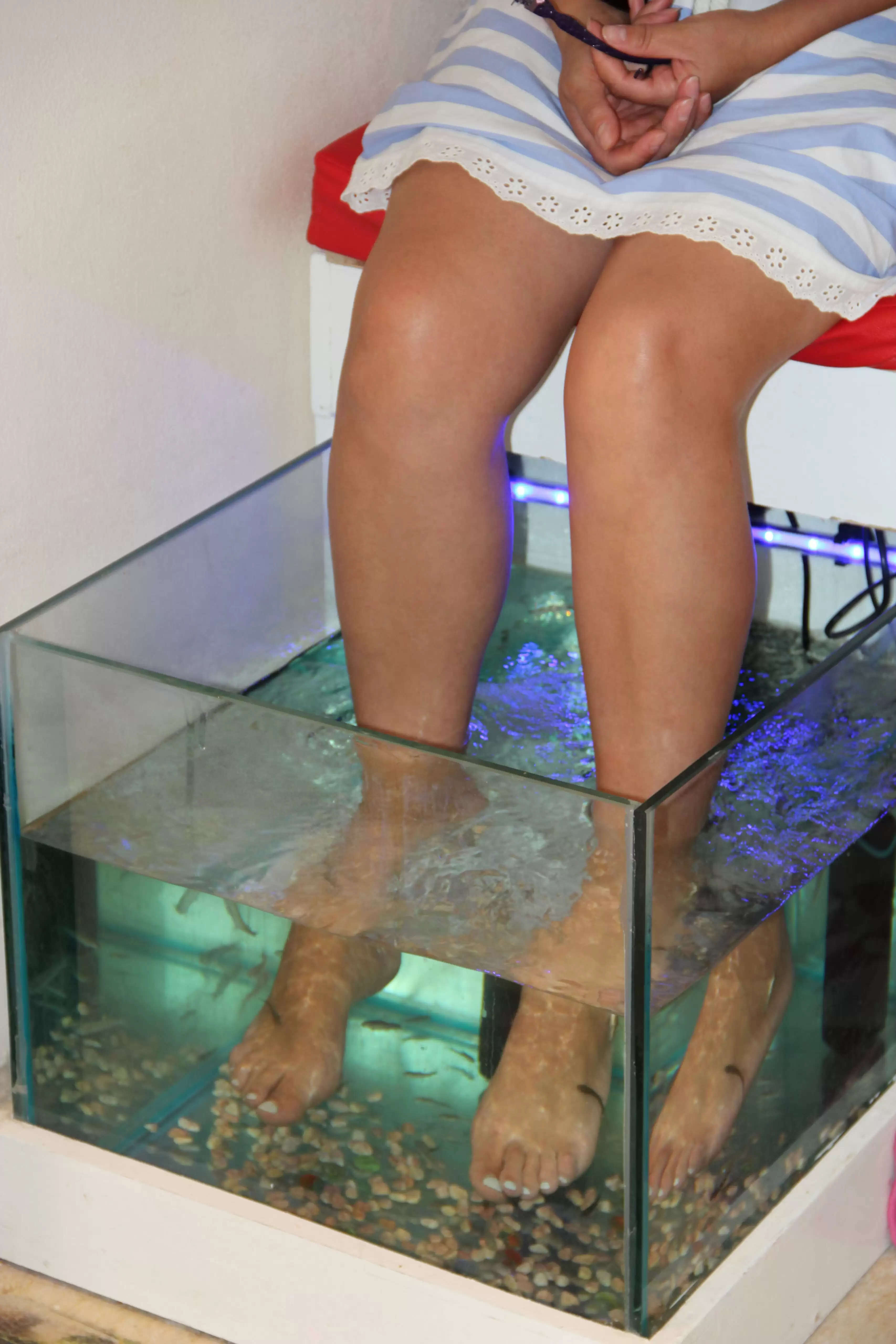Fish Pedicures: What It Is, Health hazards And Safety Concerns
Fish pedicure, originating in Turkey, involves immersing one's feet in a basin of water teeming with fish.

These tiny creatures, often referred to as doctor fish or garra rafa, nibble away at the dead skin cells on the feet. The result is smoother, callus-free, and visibly clearer skin.
People enthusiastically embrace the opportunity to indulge in fish pedicures as they perceive them as enjoyable experiences. The process effectively exfoliates the skin in a delightfully unconventional manner, adding an element of amusement to the traditional concept of skincare.
This procedure became a trend due to its gentle and painless exfoliating and softening effects on the feet. While the fish pedicure may cause ticklish sensations, it does not inflict any harm. However, it is important to note that these pedicures come with certain health and environmental risks.
Benefits of fish pedicure
Benefits of fish pedicures include exfoliation of the feet and reduction of calluses, resulting in softer skin and improved foot appearance. Additionally, some people argue that G. rufa fish, commonly used in fish pedicures, can aid in the treatment of skin conditions like psoriasis.
Health hazards
Bleeding
Although G. rufa fish, commonly used in fish pedicures, lack teeth and typically do not cause bleeding, their scarcity and protected status in Turkey often lead spa establishments to source fish from East Asia. This introduces a potential hazard as another fish species, Cyprinion macrostomus, closely resembling G. rufa fish, is present. Referred to as chin chin fish, they also consume dead skin but possess teeth, increasing the likelihood of breaking the skin and inducing bleeding.
Infections
A study highlights the potential risk of spreading zoonotic diseases through fish pedicures, where infections originating in animals can be transmitted to humans. Researchers have discovered microbes that can cause illnesses in both humans and fish, specifically in Garra Rufa used in fish spas.
Death
While infrequent, there have been documented instances where infections acquired from fish pedicures have led to fatalities. Because of this potential risk, people with compromised immune systems, diabetes, or other significant health conditions should refrain from undergoing fish pedicures.
Environmental consequences
The environmental consequences of fish pedicures are a significant concern. One particular issue is the potential impact on the environment. The overfarming of a species called G. rufa has prompted Turkey to designate it as a protected species. However, in other countries, this protection may not be in place. Overfarming a single fish species can lead to a decline in its population, which subsequently disrupts ecosystems and affects other animals higher up the food chain.
Safety concerns about fish pedicures
Fish pedicures can pose potential risks and safety concerns. The following points outline the reasons behind these concerns:
Sanitization challenges
Ensuring proper sanitation between patrons is difficult due to the requirement of removing the fish from the basins, while the fish themselves cannot be effectively sanitised.
Potential for confusion
Garra rufa, the fish commonly used in fish pedicures, can be mistakenly identified as another species called Chinchin. Unlike Garra rufa, Chinchin can develop teeth and bite, leading to pain and an increased risk of infection.
Staph infections
There have been reported cases of staph infections following fish pedicures. These infections are attributed to the presence of pathogenic bacteria in the fish, which can be transmitted to individuals during the pedicure process.
Onychomadesis
Fish pedicures have been associated with a condition called onychomadesis, where the toenails turn black and eventually fall off. This condition is believed to result from nail trauma caused by the pressure exerted by the fish during the pedicure.
Mycobacteriosis
A bacterial infection known as mycobacteriosis has been reported in at least one instance following a fish pedicure. This infection manifests as rough plaque on the skin and can be a consequence of the pedicure procedure.
Risk of blood-borne diseases
In situations where a person has an open cut that bleeds into the basin, there is a small but potential risk of blood-borne diseases being transmitted between customers. It is important to maintain caution to prevent such transmission during fish pedicures.
Conclusion
Fish pedicures have garnered controversy as a form of foot treatment. The process entails immersing one's feet in a water basin while doctor fish, scientifically known as G. rufa, consume the dead skin cells. These pedicures have raised concerns due to potential infection risks, leading some people to argue against their practice, citing cruelty. Additionally, the overfarming of G. rufa could negatively impact the environment.
Disclaimer: The above content is for informational purposes only and should not be used as a substitute for the advice of a qualified physician or doctor. The Company does not vouch for or endorse any of the above content, and disclaims any and all warranties, express or implied, relating to the same..png)